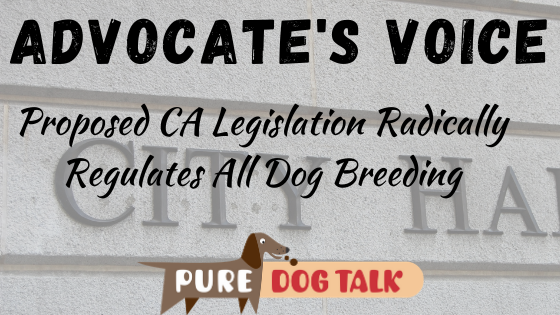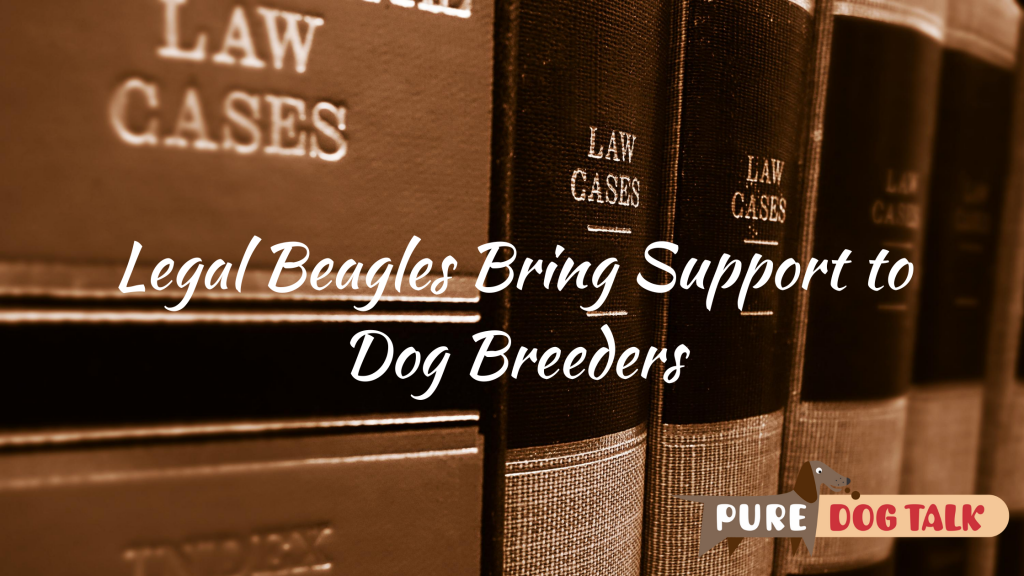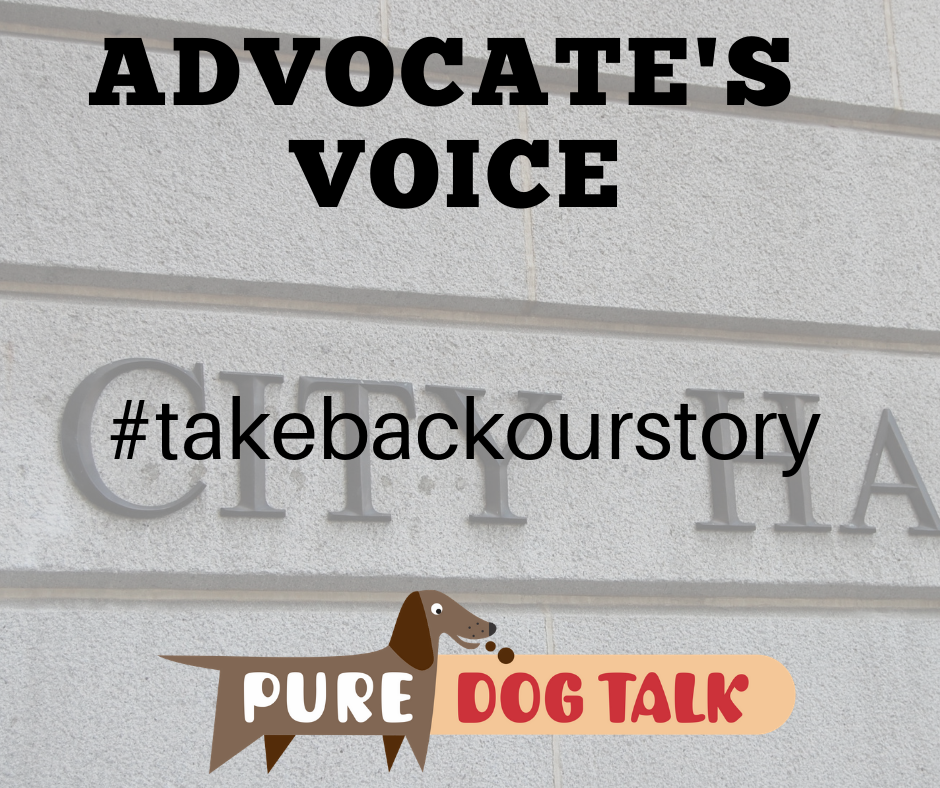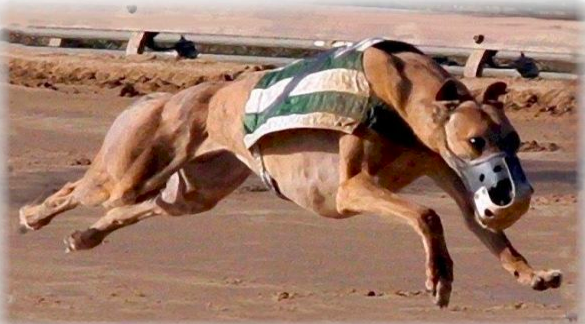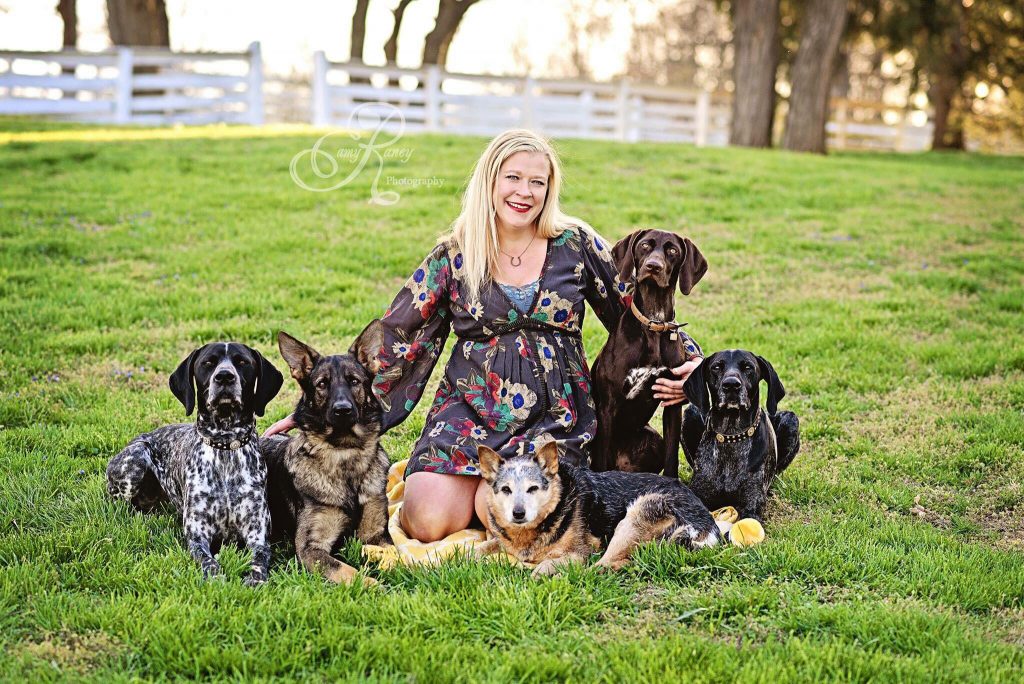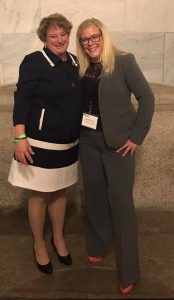467 – Proposed CA Legislation Radically Regulates All Dog Breeding
Proposed California Legislation Radically Regulates All Dog Breeding
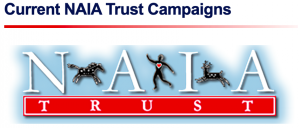 California’s AB702 threatens to decimate the hobby breeder population in the state, according to Patti Strand, President of the National Animal Interest Alliance.
California’s AB702 threatens to decimate the hobby breeder population in the state, according to Patti Strand, President of the National Animal Interest Alliance.
Learn more and find contact information for YOUR legislator at NAIA Trust.
Text of the bill is below. Please read the bill. Listen to Patti’s recommendations for when and how we can all stand together to help educate legislators in the state.
AB 702, as introduced, Santiago. Animal breeding: permits.
Existing law establishes the Department of Consumer Affairs, which regulates and licenses various businesses and professions in the state.
Existing law, the Polanco-Lockyer Pet Breeder Warranty Act, establishes various requirements for dog breeders. Existing law also authorizes the regulation and licensing of dogs by cities and counties.
This bill would prohibit a person from establishing or maintaining a dog or cat kennel for breeding purposes, as specified, without a breeder permit, as defined. The bill would require an application for a breeder permit to contain specified information requested by the local jurisdiction and would require a local jurisdiction to issue a breeder permit if the owner provides specified proof that various conditions are met, as specified, thereby imposing a state-mandated local program. The bill would authorize the local jurisdiction to assess fees pursuant to these provisions but would prohibit those fees from exceeding the reasonable costs of administering the provisions.
The California Constitution requires the state to reimburse local agencies and school districts for certain costs mandated by the state. Statutory provisions establish procedures for making that reimbursement.
This bill would provide that no reimbursement is required by this act for a specified reason.
DIGEST KEY
Vote: majority Appropriation: no Fiscal Committee: yes Local Program: yes
BILL TEXT
THE PEOPLE OF THE STATE OF CALIFORNIA DO ENACT AS FOLLOWS:
SECTION 1.
Chapter 8.5 (commencing with Section 122336) is added to Part 6 of Division 105 of the Health and Safety Code, to read:
CHAPTER 8.5. Breeder Permitting Programs for Cats and Dogs
122336.
For purposes of this chapter, the following definitions shall apply:
(a) “Breeder permit” means a document issued annually by a local jurisdiction or its local animal control agency if authorized to issue these permits, that authorizes a person to own or possess within that locality an unaltered cat or dog for the purposes of breeding and meets the requirements of subdivision (a) of Section 122338.
(b) “Local animal control agency” means the municipal or county animal control agency or other entity responsible for enforcing animal-related laws.
(c) “Local jurisdiction” means any city, county, or city and county.
(d) “Spay or neuter” means any procedure performed by a duly licensed veterinarian that permanently sterilizes an animal and makes it incapable of reproduction.
(e) “Unaltered” means any female or male dog or cat that has not been spayed or neutered or has otherwise been rendered incapable of reproduction.
(f) “Breeding” shall be deemed to have occurred upon the production of offspring, whether the offspring result from sexual activity or artificial insemination, and whether the sexual activity was intentional or the result of improper confinement.
(g) “Proper shelter” means an enclosure with four walls, a roof and a raised floor that adequately protects from exposure to cold, heat, and water, and that gives access to an enclosed yard or other open outdoor space.
122337.
(a) Subject to subdivision (b), no person, as principal, agent, employee, or otherwise, shall establish or maintain any dog or cat kennel for breeding purposes, keep any dog or cat for breeding purposes, or breed any dog or cat that is owned, harbored, or kept without first applying to and receiving a breeder permit.
(b) The application for a breeder permit shall contain information that is requested by the local jurisdiction, including, but not limited to, the following:
(1) A complete description of the nature and extent of the breeding to be conducted and for which application is made, including the breed of cats or dogs proposed to be bred.
(2) The address of the location at which breeding will occur and, if different from the breeding address, the address of the location at which the litter shall be queened or whelped.
(3) The name and address of the applicant or applicants.
(4) A statement by the applicant or applicants stating that each applicant or applicants owns either of the cats or dogs to be bred and that there are no other owners.
(5) A statement by the applicant or applicants stating that at least one of the litter is intended to be offered for sale.
(6) Evidence that the cats or dogs to be bred do not have the same sire or dam.
(7) Evidence that the dam to be bred is at least two years of age and no more than seven years of age.
(8) A copy of a valid certificate of health for the dam.
(9) Evidence that both cats and dogs to be bred have microchip devices implanted with the permittees contact information.
(10) If the owners are not the applicant or applicants, written authorization to do any of the following:
(A) Breed.
(B) Queen.
(C) Whelp.
(D) Breed and queen.
(E) Breed and whelp.
(11) A statement by the applicant or applicants stating that the applicant or applicants have reviewed and will comply with all applicable rules and regulations regarding breeding and keeping animals on private property.
(12) Other information that may be required by the jurisdiction, consistent with the purposes of this chapter.
(c) A person who is in possession of any document issued by the local jurisdiction or its authorized local animal control agency that permits actions described in subdivision (a) shall be deemed in compliance with this act until the document expires.
122338.
(a) A local jurisdiction shall issue a breeder permit if the owner provides sufficient proof, as determined by the local jurisdiction or its authorized local animal control agency, that the following conditions are met:
(1) The owner demonstrates, by providing a copy of their business license and federal and state tax number, or by other proof, as required by the local jurisdiction or its authorized local animal control agency, that the owner is doing business as a cat or dog breeder at a location for which the local jurisdiction or its authorized local animal control agency has issued the business license.
(2) The owner agrees to comply with the following requirements:
(A) Only one litter per year, per cat or dog per household may be queened or whelped.
(B) Proper shelter shall be provided for all cats, dogs, and litters.
(C) Clean and reasonably temperate water shall be provided to all cats and dogs at all times.
(D) Nutritious food sufficient to properly nourish the dam and the dam’s litter shall be provided.
(E) Cats’ and dogs’ living quarters and yards shall be properly maintained at all times, including, but not limited to, removal of feces and urine to prevent odors from entering surrounding areas.
(F) Births shall be reported to the local jurisdiction within 10 days of their occurrence.
(G) No offspring shall be sold or otherwise transferred, whether for compensation or otherwise, until it has reached the eight weeks of age, has been immunized against common diseases, and has been issued a certificate of health.
(H) All offspring shall have a microchip device that identifies the breeder implanted before the eight weeks of age. The identity of the breeder shall remain on the microchip device along with the identity of the new owner upon the sale or transfer of the animal.
(I) All advertising in any medium undertaken to market the offspring of a permitted unaltered animal shall prominently feature the permit number and identity of the permitting jurisdiction.
(J) An owner who transfers ownership of a dog or cat for compensation or otherwise shall disclose to the transferee information regarding the license and permit requirements of the jurisdiction applicable to the transferred animal and all medical records, health certificates, and microchip information.
(b) (1) The amount of the fee for a breeder permit shall be determined by the local jurisdiction, but shall not exceed the reasonable costs of administering these provisions.
(2) A fee assessed by a local jurisdiction pursuant to this chapter shall not be duplicative of any other local fee in that jurisdiction.
(c) Nothing in this section shall prohibit a local jurisdiction from adopting or enforcing more restrictive spay and neuter, unaltered, or breeding provisions pursuant to Section 122331.
(d) (1) Any individual or organization breeding animals for services provided by guide dogs, signal dogs, or service dogs, as defined in subparagraph (C) of paragraph (6) of subdivision (b) of Section 54.1 of the Civil Code, shall be presumptively entitled to a breeder permit issued pursuant to this chapter.
122339.
(a) A local animal control agency shall be responsible for enforcing and administering this chapter.
(b) A local animal control agency may revoke a permit of an owner, after notice and an opportunity to be heard, for a failure to comply with the requirements of paragraph (2) of subdivision (a) of Section 122338.
SEC. 2.
No reimbursement is required by this act pursuant to Section 6 of Article XIII B of the California Constitution because a local agency or school district has the authority to levy service charges, fees, or assessments sufficient to pay for the program or level of service mandated by this act, within the meaning of Section 17556 of the Government Code.
415 – Legal Beagles Bring Support to Dog Breeders
Legal Beagles Bring Support to Dog Breeders
The legal beagles at Good Dog join host Laura Reeves to talk about their brand-new legal Resource Center. Ivy League-educated, top Manhattan legal firm attorneys are putting together an entire package of legal services for dog people.
“Dog breeders can and should be empowered with the law,” said Cat Matloub, Good Dog’s Head of Partnerships & Legal Affairs.
“When we started out at Good Dog, we very quickly realized the need for legal support for dog breeders in a few different areas. We identified five key areas where we can provide real valuable legal support and protection to breeders and help them protect their rights, their dogs, their programs and all of that. The five key areas are number one, how to protect breeders’ legal rights and that’s anything from support if there are ever any issues with animal control or breeders being unfairly targeted or their dogs being targeted.
“We do a lot of assisting with stolen photos and content that’s stolen from breeders. That is an enormous area where the public is continually misled and scammed. It’s contributing to the sort of horrible state of affairs that it is out there for a lot of puppy buyers. So we actually are able to get that content taken down on our breeders’ behalf. We have direct lines to the hosting companies of all these websites now and so breeders can come to us anytime.
Defense from scammers
“We help provide protection to our breeders if they’ve been scammed. If they’re worried about being scammed, we provide secure payment systems so that no breeders can ever be scammed.
“We also create things like ongoing rights to a dog, so if it’s breeding rights or rights to not have the dog bred, or co-ownership, how you can protect yourself and make sure that those rights are protected under the law.
Public Education
“With respect to protecting legal rights, we do a lot of educating the public in terms of helping them understand why breeders do things and why they shouldn’t get upset or unfairly attacked.
“Another huge area for us is legislation advocacy and overreaching regulation. What we do is we provide materials in our legal Resource Center. Letters, statements of fact, an advocacy sort of explaining why regulations are harmful, template letters that can be sent to folks that are breeders in the area and they can go speak at the council.
Contract assistance
“The other three big categories (include) contract assistance. There are so many contracts in the dog world. So sample contracts, annotated with explanations, different provisions calling out where state law applies, all of that in our legal Resource Center. What provisions to include, health care and deposit agreements, all that.
“Another big area that we provide support in is mediation services and support. Whether it’s amongst breeders or club members or breeders and puppy buyers, having an objective third party there has been enormously helpful in those situations. And then a general category of legal support more broadly, with questions around regulation and things like that.”
265 – #takebackourstory: How YOU Can Help the Fight
#takebackourstory: how YOU Can Help the Fight for Breeders’ Rights
AKC Vice President of Government Relations Sheila Goffe shares details about the Political Action Committee. This fund, administered by AKC, is another tool helping breeders #takebackourstory.
“We are constantly fighting bad legislation,” Goffe said. “One of the things we can do that is the best short cut is make sure the folks who get elected understand us. The PAC provides campaign contributions to people running for office. Our Board looks at candidates who are already in office, people in position to make a difference. People who have worked with us in the past, we want to be sure they get re-elected.”
The AKC PAC makes contributions through YOU, Goffe said. “This is your dollars, but we work with local clubs to invite local people in specific district to deliver the donation. The enables us to develop relationships in the local community with local legislators.”
The reality of money in politics, Goffe noted, is it’s not a quid pro quo. “But when you hand them a check and they know who’s contributing, it gives you an opportunity to be heard. Then it’s up to us. We are the subject matter experts. Many groups writing breeder laws have no experience breeding dogs. We are the experts.”
#takebackourstory
Regulation vs legislation
AKCGR is currently tracking more than 1500 bills nationwide. One of the hotspots of contention is in Ohio.
“There’s a lot of confusion about what’s going on in Ohio,” Goffe said. “Definitions impacting hobby breeders have not changed. We are working with them directly, with the director of Ohio legislature, to ensure that the correct intent of the laws and regulations are adhered to.”
In a shorthand version of the legislative process, Goffe noted that once a bill passes and becomes law, administrators create regulations that implement the law. The people who are determining how the Ohio law is to be implemented are misinterpreting the regulation.
There are a whole lot of reasons that legislation and definitions matter, Goffe said. Proposed legislation needs to be reviewed because even though it may not impact breeders today, the question remains how easy would it be for it to have impact in the future.
“It may not apply to you until it’s “misinterpreted”… the intent of legislators is one thing, then it goes to how is it implemented. The application of the statute can be a problem,” Goffe said.
It matters. Pay attention. 98% of success is showing up.
https://www.akc.org/clubs-delegates/government-relations/toolbox/
https://www.akc.org/clubs-delegates/government-relations/federations/
225 – Fighting to Preserve our Breeds and their Purposes
Inside the battle to preserve racing Greyhounds
Jennifer Newcome, chair of the committee to support greyhounds, joins me to talk about the fight to preserve Greyhound participation in a sport they love and the current ballot initiative in Florida to ban betting on Greyhound racing.
The proposed legislation is a Constitutional amendment that effectively allows Animal Rights extremists to define what constitutes humane treatment of animals, rather than breeders, owners and exhibitors, Newcome said.
Equating a dog’s purpose-bred job with inhumane conditions, is a “terrifying” concept, Newcome added. It creates a vehicle for banning all activities with animals at the constitutional level.
From the Greyhound Club of America:
About The Greyhound
Purpose
The Greyhound is a sighthound and one of the oldest breeds of dogs. Sighthounds are hunting dogs that pursue running game by sight rather than by scent. This manner of hunting is called “coursing”. The attributes of speed, agility, strength and endurance are necessary to catch and hold game. The feature that distinguishes Greyhounds (and sighthounds) is their ability to run at speeds of 35 miles per hour or more using the double suspension gallop. The Greyhound demonstrates the double suspension gallop in its highest perfection. Their incredible speed comes from the singular combination of skeletal structure, musculature, and the ability to focus completely on the object of the chase.
Greyhounds and other sighthounds course game independently of humans. Sighthounds are unlike other breeds such as herding dogs that take signals from humans when moving sheep from pasture to pen or sporting dog breeds that range out to point and hold birds in one spot until their human indicates it’s time to flush. Once the chase is on and the Greyhound is on its way, there is very little you can do to intervene until the chase is over.
Newcome encourages all Florida residents to vote no on Amendment 13 to protect all of our rights to enjoy the various sports we play with our animals. The American Kennel Club and National Animal Interest Alliance also oppose this legislation.
205 – NAIA’s Sara Chisnell on Legislative Trends
NAIA’s Sara Chisnell on Legislative Trends Nationwide
NAIA Legislative Director Sara Chisnell and PureDogTalk Host Laura Reeves at the NAIA Conference in Washington, DC October 2017.
National Animal Interest Alliance Legislative Director Sara Chisnell is seeing legislative trends develop across the country in several categories. More than just dogs, NAIA is leveraging a larger voice by bringing together groups across the animal kingdom.
Pet shop mandates
Pet shop sourcing mandates are cropping up in a number of states, Chisnell said. Laws were recently passed in California and Maryland which require pet shops to source the animals they sell only from shelters and rescues, cutting off supplies of commercially bred dogs.
“Puppy mill is a genius term coined by the animal rights groups,” Chisnell said. “What was portrayed in past is not true today. No matter how you feel about it, it is a much more regulated source of dogs than any shelter or rescue. There are no regulations whatsoever of shelters and rescues, while there are many layers of regulation on commercial breeders.”
For newer listeners, take a minute to check out PureDogTalk’s interview on this topic from last year.
“Set aside how folks feel about commercial breeders and pet shops,” Chisnell said, “when you cut off this supply, mandating only shelters/rescues supply to pet shops, it opens up those channels further. We have a huge problem with importation of unwanted dogs from other states and other countries. This is bringing in new diseases, Korean dog flu, zoonotic diseases, all kinds of crazy stuff. This is the main reason you should care. This will impact your own dogs.”
Chisnell also noted an increase in behavior issues in rescue animals as a direct result of the “no kill” movement in which rescuers are trying to save all dogs, whether they should be in a home or not.
“Some of the people working in shelters/rescues are very well intentioned,” Chisnell commented. “But many of them may not be properly equipped to evaluate the dogs. There are no repercussions for rescues. Purpose bred animals have consumer protection laws. These no longer come into play when it’s shelter or rescue animals.”
NAIA is working with the pet shop industry on preemptive laws, Chisnell noted. One particular eample, in Michigan, strengthens requirements for pet shops, while simultaneously preempting pet shop sourcing mandates.
Hot car bills
Feel good legislation, like providing immunity for individuals to break into a car to save an animal, have a multitude of unintended consequences that have not been thought through, according to Chisnell.
Animal Research Adoption Bills
These laws require research facilities to place animals in adoption, often through local animal shelters.
“These are programs that research facilities have had for years,” Chisnell noted. “When they are forced to work with local animal shelters, it takes away oversight from people who know the animals.”
For more information on the incredible work done within the research community working with animals, listen to Dr. Cindy Buckmaster’s PureDogTalk interview.
On the plus side…
- NAIA worked with the Illinois Purebred Dog Federation to pass a law requiring more oversight and reporting from shelter and rescues.
- A proposal in New Mexico to charge a pet food fee to a fund state spay/neuter campaign was defeated through NAIA’s efforts.
- NAIA drafted law to require shelters in Virginia to disclose behavior history, particularly known bite history, prior to adoption of a dog.
- In New Hampshire, grass roots advocacy supported by NAIA stopped anti-breeder legislation before it was passed.
For more information about the legislative work NAIA does, click the legislative action center and sign up for alerts at http://www.naiatrust.org/
Remember to stick around for Allison Foley’s Tip of the Week from the Leading Edge Dog Show Academy on safely loading vehicles for travel with our dogs.

